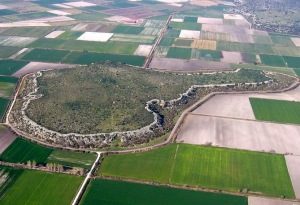
A team of archaeologists is surveying and excavating the remains of a major ancient Mycenaean citadel—an archaeological site featuring ruins that are turning out to be much more extensive than what meets the naked eye.
Under the leadership of Associate Professor Christofilis Maggidis of Dickinson College and the auspices of the Athens Archaeological Society, teams of specialists have been systematically surveying an imposing, island-like, flat-topped bedrock outcrop that rises 20-40 meters above a surrounding plain with a summit area stretching 49.5 acres at the northeastern edge of the Kopais basin in southeastern Greece. Known as the citadel of Glas and identified as consisting of ancient Mycenaean structures, the summit area featuring the ruins is estimated to measure ten times the size of the ancient citadel of Mycenaean Tiryns and seven times that of Mycenae, the famed city of Agamemnon of Homer’s Iliad.
_____________________________________
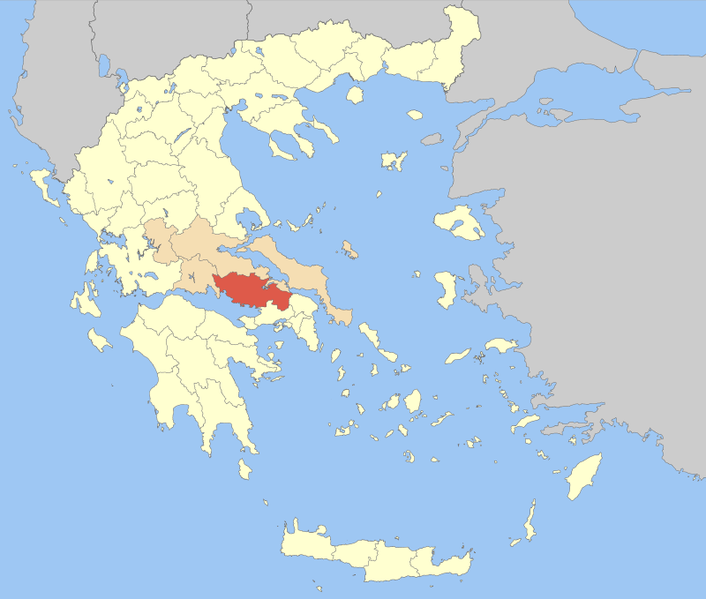 Map shows the region (red) of Greece wherein the Kopais basin and Glas are located. Wikimedia Commons
Map shows the region (red) of Greece wherein the Kopais basin and Glas are located. Wikimedia Commons
_____________________________________
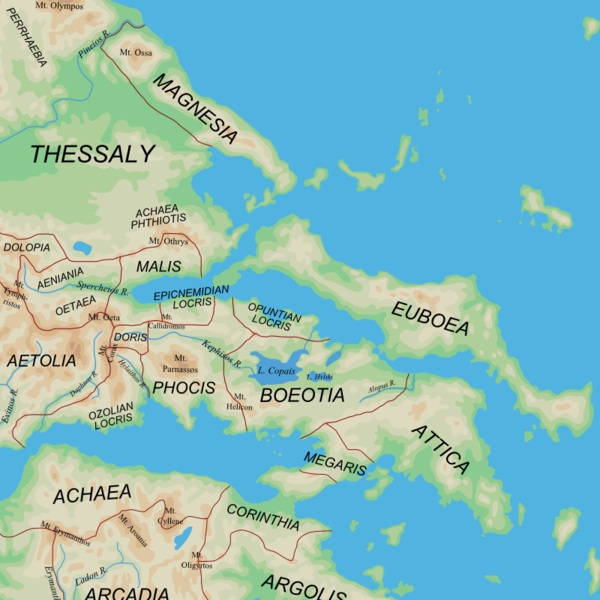 Boeotia, where the Kopais basin and Glas are located, in the context of the nearby ancient central regions of Greece. Ministerofbadtimes, Wikimedia Commons
Boeotia, where the Kopais basin and Glas are located, in the context of the nearby ancient central regions of Greece. Ministerofbadtimes, Wikimedia Commons
_____________________________________
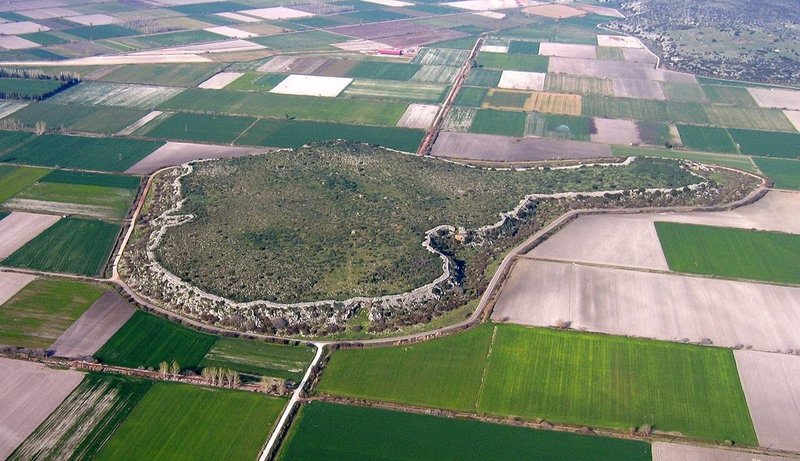 Aerial view of Glas in the midst of the surrounding plain, showing massive Cyclopean walls enclosing and defining the site of the ancient remains. Courtesy Christofilis Maggidis
Aerial view of Glas in the midst of the surrounding plain, showing massive Cyclopean walls enclosing and defining the site of the ancient remains. Courtesy Christofilis Maggidis
__________________________________
“I first excavated at Glas in 1990 as a graduate student with my mentor, the late Spyros Iakovidis,” said Maggidis. “The unparalleled size of the citadel, its connection with the gigantic drainage project of Kopais, and the discovery of such important but few remains in the citadel indicating that the rest of the citadel was left vacant puzzled me since then.”
Begun in the 14th century BC, the drainage project of Kopais was a large-scale engineering effort of massive proportions which transformed the Kopais basin into what became the most fertile plain on mainland Greece. The ancient engineers drained marshland through a complex drainage control system, diverting six rivers and streams from the basin into two enormous canals that converged at the northeastern edge of the Kopais basin. The canals were flanked by massive embankments reinforced at some locations with double Cyclopean revetments that supported roads and were supplied with underground drains and channels directing water overflow into artificial polders, natural cavities and sinkholes, or to the Larymna bay. Archaeologists estimate that as much as 2,000,000 cubic meters of earth were moved to build dykes and embankments along the periphery of the basin, with more than 250,000 cubic meters of stone used to face the embankments.
Thought to be the administrative center for this expansive system, the citadel of Glas was protected by a massive Cyclopean wall about 5.50-5.80 meters thick, running along the edge of the natural outcrop summit platform and defining the periphery of the citadel for approximately 3 kilometers, featuring four gates and a cluster of three adjacent central enclosures. But, said Maggidis, “the citadel of Glas presented the lay-out of a fort with certain spatial peculiarities: only one third or less of the total area of the citadel (49.5 acres) seemed to be occupied by various buildings and structures (administrative buildings, storage facilities, workshops, kitchens, personnel residence quarters), whereas no other ruins had been located so far by surface survey anywhere else in the citadel.” The space outside the central enclosures, in other words, appeared to be void of structures. Why?
_________________________________
 The ancient gate structures of Glas. Courtesy Christofilis Maggidis
The ancient gate structures of Glas. Courtesy Christofilis Maggidis
__________________________________
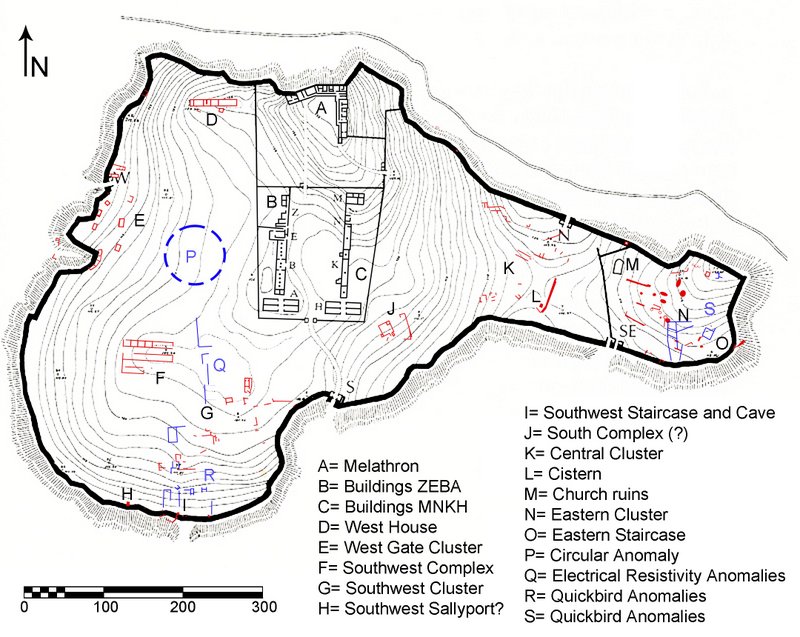 General plan of the Glas site. Note the gaps where no structures are visible. Courtesy Christofilis Maggidis
General plan of the Glas site. Note the gaps where no structures are visible. Courtesy Christofilis Maggidis
____________________________________
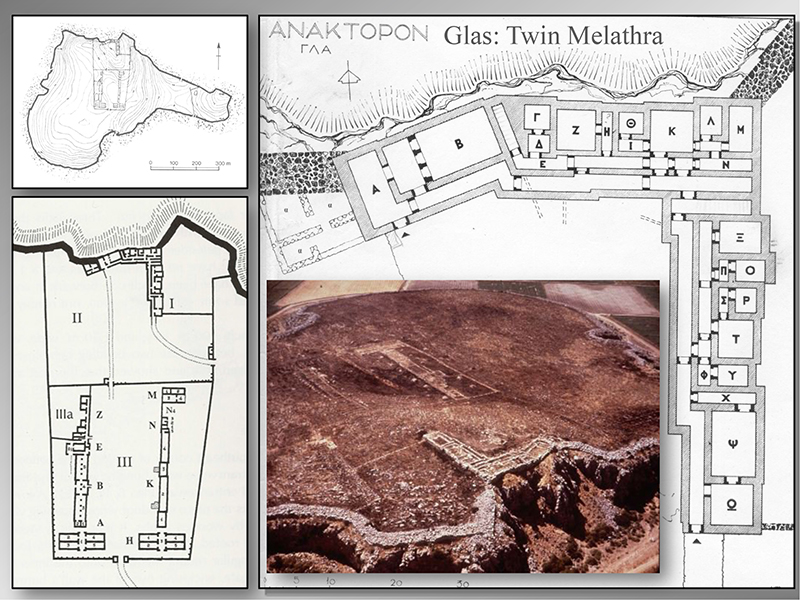 Structures excavated in area A (see the larger plan above this image) at the site. Courtesy Christofilis Maggidis
Structures excavated in area A (see the larger plan above this image) at the site. Courtesy Christofilis Maggidis
____________________________________
For Maggidis, this just didn’t add up.
“I was convinced that Glas was much more than a fort administrating the drainage works of the Kopais lake and the local agricultural production, and decided to investigate the site further.”
And investigate he did.
Beginning in 2010, Maggidis and colleagues conducted a systematic geophysical survey of the citadel using ground penetrating radar (GPR), a Fluxgate gradiometer, electrical resistivity, and satellite imagery. The team focused primarily on unexplored areas and some already excavated sectors.
The results were illuminating.
“The citadel of Glas was not left void of structures outside the central enclosures after all, but was apparently covered with many buildings of various uses, including at least five large and well-built complexes, extensive residential quarters and clusters of buildings stretching between these complexes, (semi)circular structures (silos?), a cistern, staircases, retaining walls and terraces. This is the picture of a fortified town.”
Maggidis and colleagues had come much closer to uncovering the true proportions and complexity of the citadel. But looking ahead, he sees much more to be done.
“The systematic investigation of the Mycenaean citadel of Glas will continue and intensify in the next decade,” says Magiddis. “The geophysical survey will focus on the eastern (Sector IV) and the western part of the citadel (Sector V), while systematic excavation will target select building complexes, clusters, and structures.”
More information about the Glas survey and excavations can be obtained at the project website. A detailed article about the discoveries at the citadel of Glas will be published in the upcoming September issue of Popular Archaeology Magazine.
_______________________________________________
Read about the most fascinating discoveries with a premium subscription to Popular Archaeology Magazine. Find out what Popular Archaeology Magazine is all about. AND MORE:
On the go? Get the smartphone version of Popular Archaeology as an app or as an ebook.
Popular Archaeology’s annual Discovery Edition eBook is a selection of the best stories published in Popular Archaeology Magazine in past issues, with an emphasis on some of the most significant, groundbreaking, or fascinating discoveries in the fields of archaeology and paleoanthropology and related fields. At least some of the articles have been updated or revised specifically for the Discovery edition. We can confidently say that there is no other single issue of an archaeology-related magazine, paper print or online, that contains as much major feature article content as this one. The latest issue, volume 2, has just been released. Go to the Discovery edition page for more information.




